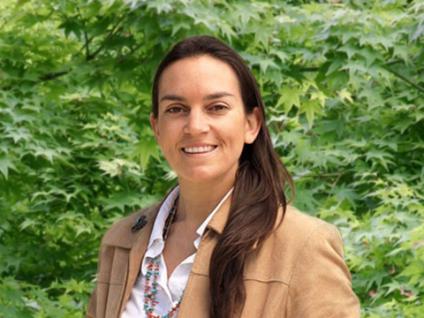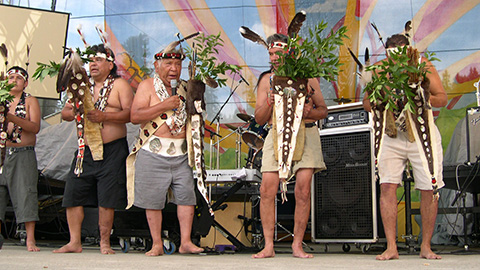Nestled in Laguna Pueblo about 47 miles west of Albuquerque, New Mexico, lies a half-million-acre reservation with beautiful mesas speckled with junipers, piñon pines, sagebrush and saltbush plants.
The land is under tribal stewardship by the extended family of Serra Hoagland, a research biologist and liaison officer with the USDA Forest Service Rocky Mountain Research Station. Studious from a young age, Hoagland naturally felt drawn to the holistic field of ecology, both through the teachings of her family and the environment she grew up in near the foothills of the Sierra Nevada mountains.
Her love of nature and wildlife propelled her toward a master’s in environmental science and management. Hoagland joined the Forest Service in 2010, initially working in the Southern Research Station until 2016. That year, she became only the third Native woman to earn a doctorate in forestry. Shortly after, she began work at Rocky Mountain Research Station.
Hoagland’s research includes the Mexican spotted owl habitat and the ecology and management of oak woodlands in California. But perhaps her most critical work is as liaison to the Salish Kootenai College in Pablo, Montana. There, she said she hopes to inspire the next generation of Native students toward careers in natural resource management and research.
“I think it’s a step toward fulfilling our tribal sovereignty,” she said. “We need to have more Indigenous people in leadership positions making decisions and acknowledging a relationship with the land and using practices we have built over millennia living on the landscape. When environmental management is backed in tradition, long-term stewardship and maintenance of our resources is possible.”
Tribal governments manage 56 million acres of land, 18 million of which are forests. In fact, tribes have long been at the forefront of natural resource management, using long-held ecological knowledge passed down through generations to meet tribal objectives and sharing that knowledge with other governments and organizations.
Forests are a highly valuable, renewable resource for indigenous people. Tribal forest management programs, however, are often underfunded and understaffed. The Intertribal Timber Council reports that federal funding for forestry on Indian forests had declined from $3.29 per acre to $2.83 per acre since 1991.
The Tribal Forest Protection Act of 2004 is one tool the Forest Service uses to work with tribal governments in shared responsibility for natural resources.
“Integrating tribes into shared stewardship on the nation’s forests and grasslands honors tribal sovereignty and allows us to benefit from millennia of knowledge provided by the first stewards of these lands” said Reed Robinson, director of the Forest Service Office of Tribal Relations. “Through expansion of the tribal authorities we have, such as the Tribal Forest Protection Act, we are poised to make big strides to address risks at a landscape scale in collaboration with tribes.”
The Tribal Forest Protection Act of 2004 serves as another tool in the shared stewardship toolbox. As we advance our goals of shared stewardship and cross-boundary work, the more than 574 federally recognized tribes in the U.S. can be critical stewards and co-leads as distinct, federally recognized, sovereign Nations.
We continue to celebrate and recognize the Indigenous peoples and first stewards of the lands on which we conduct Forest research and management. Now, more than ever, it is critical that we strive to improve our science by acknowledging the holistic, long-term, reciprocal relationship that Native people have with the land – both historically and today.






